Back in 2012, I took a little trip to La Chaux-de-Fonds to visit with Stefano Macaluso. The reason I requested the interview was that in July 2011, PPR (or “Gucci group” as it was known at the time the time; it is now called Kering) became the majority shareholder of Sowind Group – which owns both Girard-Perregaux and JeanRichard – with a 50.1-percent stake. This occurred following the sudden passing of Luigi “Gino” Macaluso, Stefano’s father and the “patron” of this traditional Swiss brand.
Gino Macaluso purchased the brand when Stefano, who now works in the brand’s product development, was just 13 years old.
I wanted to know from Stefano what he thought might change at Girard-Perregaux in terms of the brand’s direction in light of the new ownership relationship.
“We may perhaps be strengthening the high-end segment of minute repeaters,” he revealed at the time.
Three years later, one of the repeaters that Macaluso alluded to was presented at Baselworld: the Minute Repeater Tourbillon with Gold Bridges.
Three gold bridges
Before we go any further, I’d like to elucidate at least a little the history of the “gold bridges” that are often associated with Girard-Perregaux’s tourbillons.
Constant Girard and his brother established the watchmaking workshop bearing their name in 1852, but only when Constant married Marie Perregaux in 1854 did the company take on the moniker we know it by today. Already way back then, Constant Girard’s claim to fame was the tourbillon with three bridges.
These bridges were the result of Constant Girard’s perpetual quest for precision (large bridges equal more stability) and thanks to their unusual double-arrow shape they have truly transformed into a symbolic element of the brand. At least one gold bridge graces each of Girard-Perregaux’s modern wristwatch tourbillons since 1867, when the brand first introduced a tourbillon chronometer pocket watch featuring three nickel-plated bridges at the Paris Universal Exhibition, where it won a gold medal. Girard-Perregaux registered its distinctive design for the bridges in 1884.
Though “iconic” is a much overused word in the world of watches, Girard-Perregaux’s golden bridges are something I would indeed describe as an iconic visual in horology. This aesthetic, technical, and symbolic element is instantly recognizable to many fans of haute horlogerie.
One of Stefano Macaluso’s main responsibilities lies in leading the design of the brand’s products. He is passionate about design and puts his architectural background to good use through his involvement in product creation. And this is certainly visible in the Tourbillon Minute Repeater with Gold Bridges that the brand introduced at Baselworld 2015.
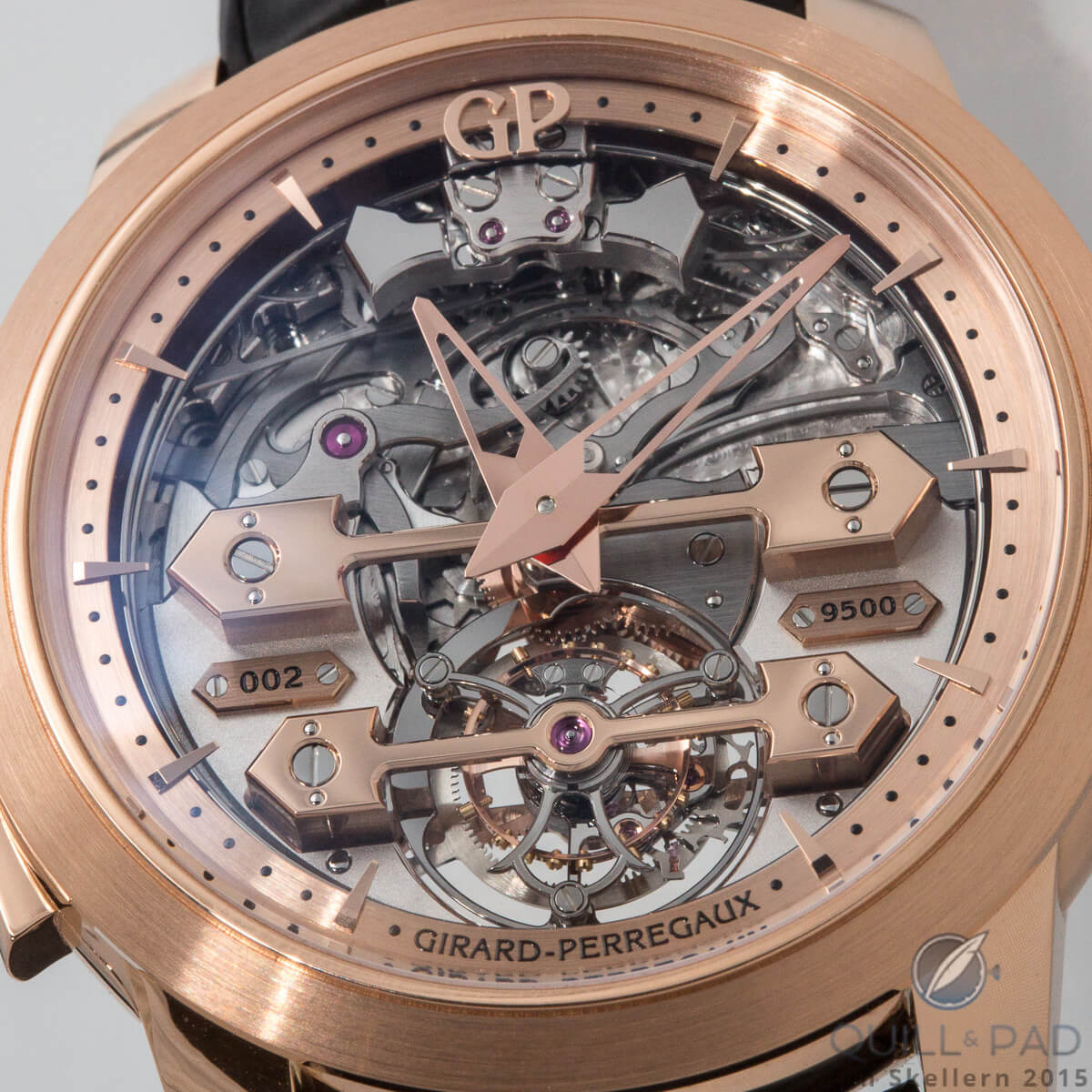
Girard-Perregaux Minute Repeater Tourbillon with Gold Bridges: you can see the two hammers at 11 o’clock and 1 o’clock
Tourbillon not the focus
For once, though, it is not the “bridged” tourbillon located at 6 o’clock that is the focus of this complicated Girard-Perregaux timepiece.
The Minute Repeater Tourbillon with Gold Bridges includes an extraordinary new version of the tourbillon and a chiming function – which is the star of the show here.
The mechanical beauty of the watch’s skeletonized dial is dominated by three elements: the smaller bridge supporting the tourbillon, the larger bridge extending across the dial between 3 and 9 o’clock, and the repeater hammers at 12 o’clock. The shape of the hammers, which rest on jewels acting as ball bearings to reduce friction, was inspired by the first golden bridges registered in 1884.
The third bridge (most Girard-Perregaux “golden bridge” timepieces have three bridges) is found on the back of the movement and is fully visible when the watch is turned over.
Unusually and very purposefully, the repeater is quite visible at work from the dial side; the hammers striking the gongs are in plain sight at 12 o’clock. The repeater components were placed there for optimum sound transmission when the repeater is being worn: rather than chime “into” the wrist as they would if on the back of the movement, which is the norm for a standard repeater, they project sound in the desired direction: up.
In contrast, the flywheel regulator, whose function is to modulate the hammers’ striking speed, was left on the back. This helps reduce ambient noise of the repeater mechanism, allowing the ear to focus on the resonant gongs. The sapphire crystal covering the case back boasts a special shape, one that is delicately curved like a musical instrument’s sounding box. This allows for maximum reverberation of the gong volume.
Partially skeletonized, the bridges and plates not only enhance sound, they also offer a full view of the movement’s mechanical beauty. No fewer than 270 hours are required to assemble and adjust this masterpiece.
All in all, this is an exceptional timepiece, which is as pleasing to the eye as it is to the ear. Much of which is thanks to Macaluso’s good work.
“This larger-sized technical design for the Three Bridges tourbillon first shocked people inside the company,” he revealed almost in a whisper. “Already when Constant Girard designed the Three Bridges, his major concept – we think – was to have his own ‘signature’ visible via the watch’s architecture, and he was very strong in doing that. And that’s why we can have different ways to develop Girard-Perregaux. But it must be always a Girard-Perregaux, and we have to feel it. My mission as product development and coordinate designer is to maintain this strong Girard-Perregaux feeling.”
For more information, please visit www.girard-perregaux.com/collection/minute-repeater-tourbillon.
Quick Facts
Movement: manually wound Caliber GP09500-0002 with one-minute tourbillon and minute repeater; 58 hours power reserve; 406 individual components
Case: 45 mm, pink gold
Functions: hours, minutes; minute repeater
Limitation: 10 pieces
Price: $359,000





















































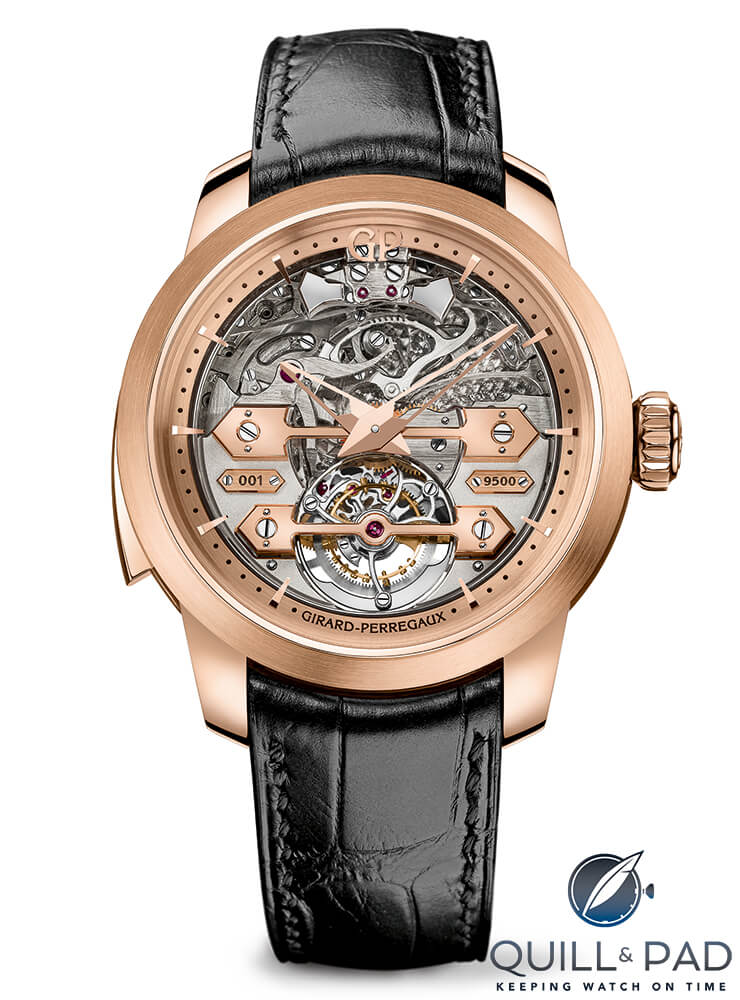
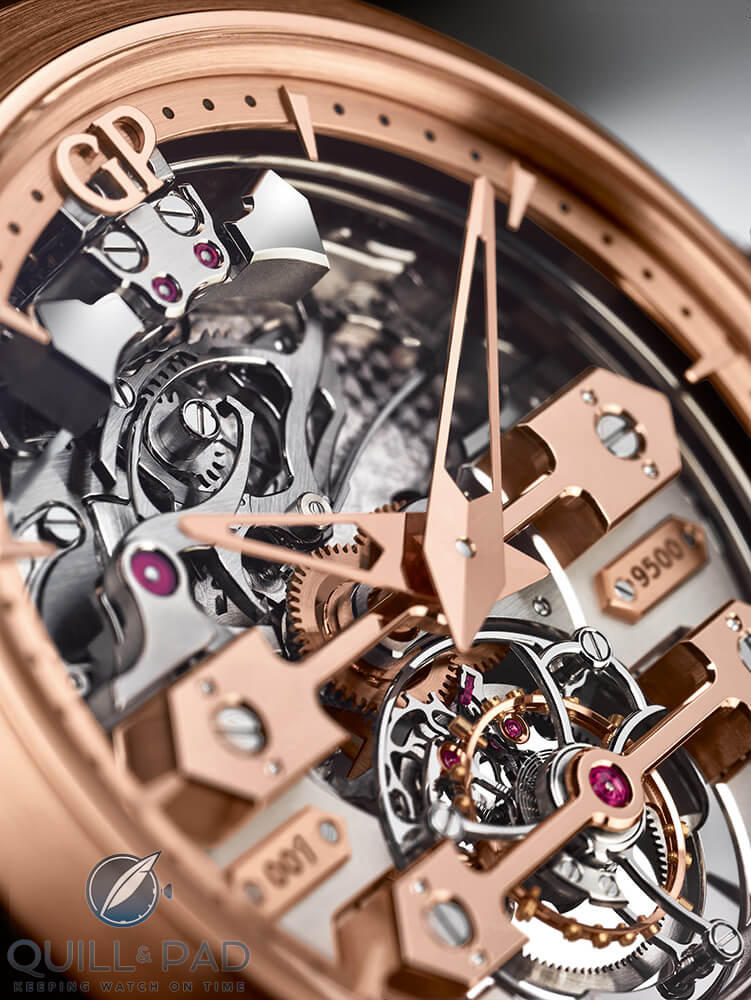
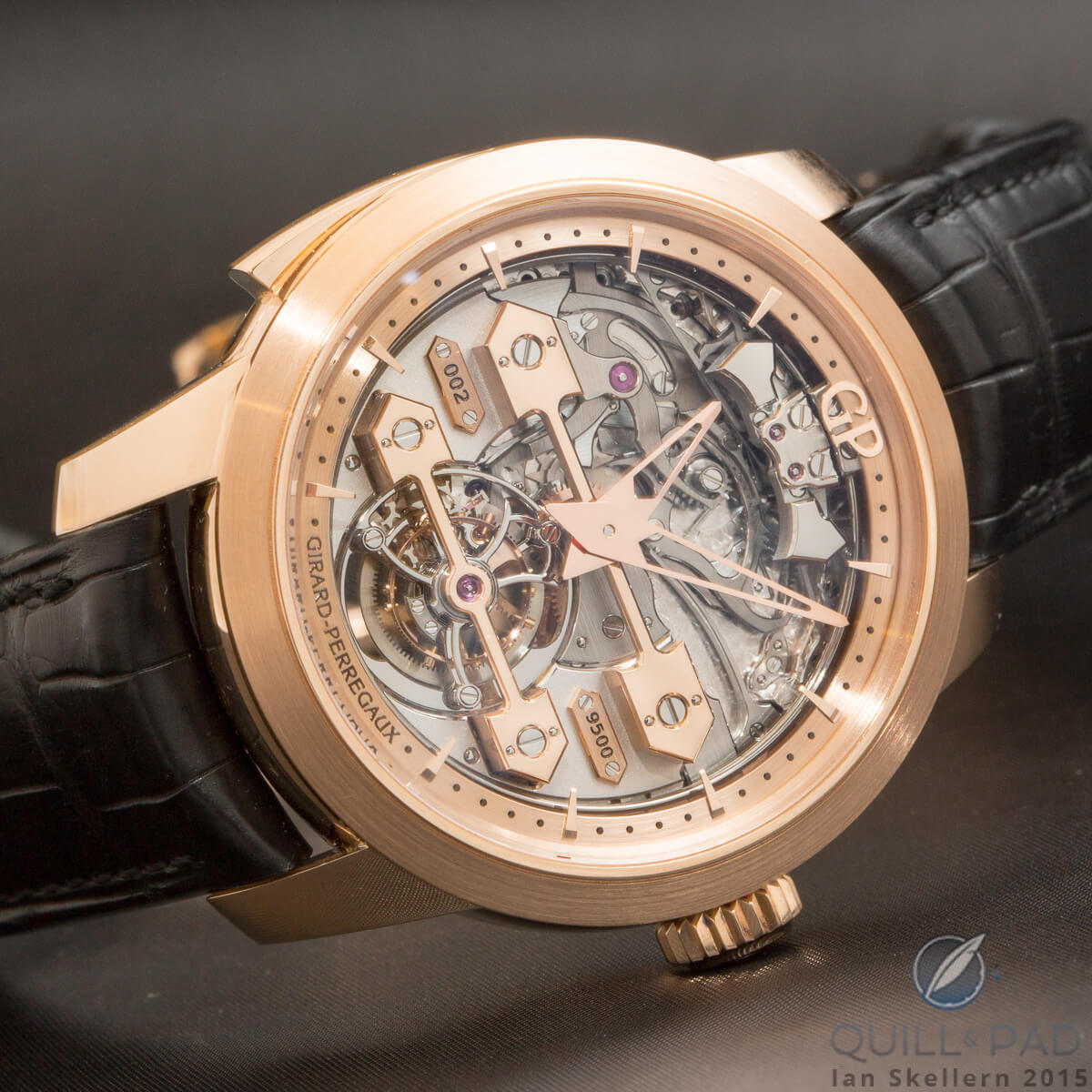
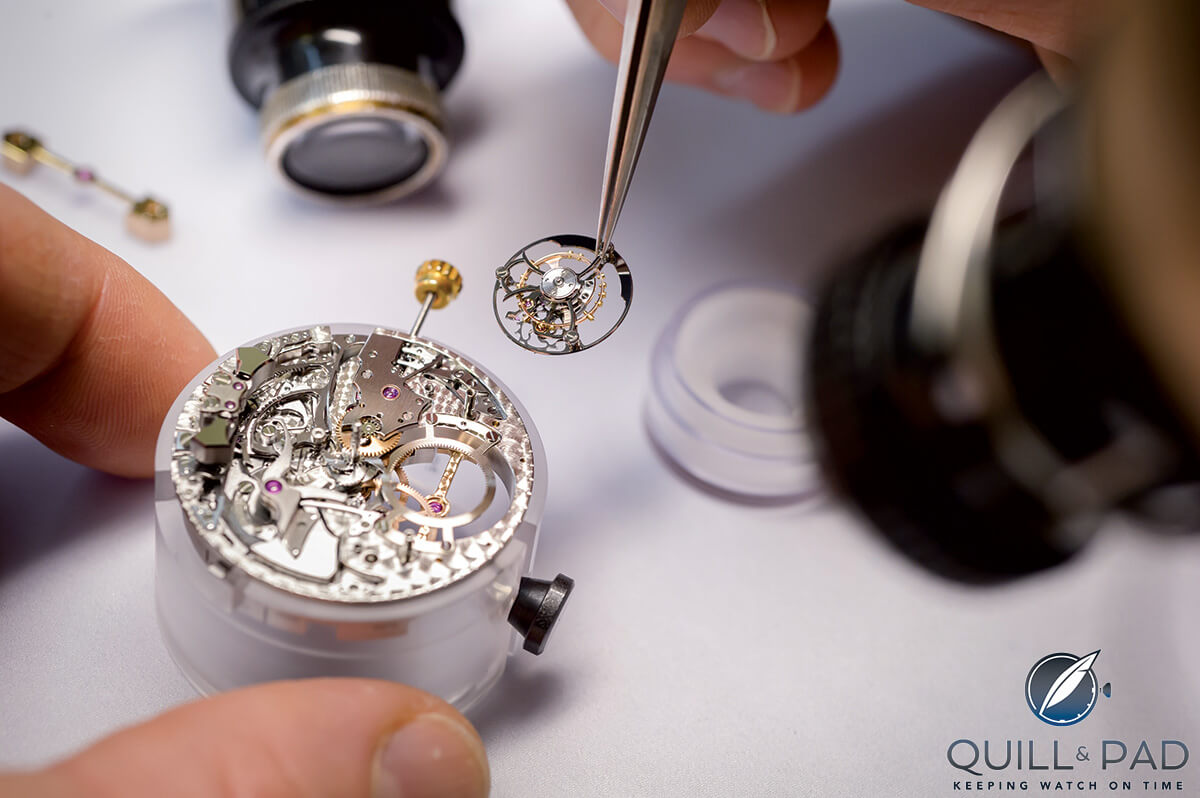
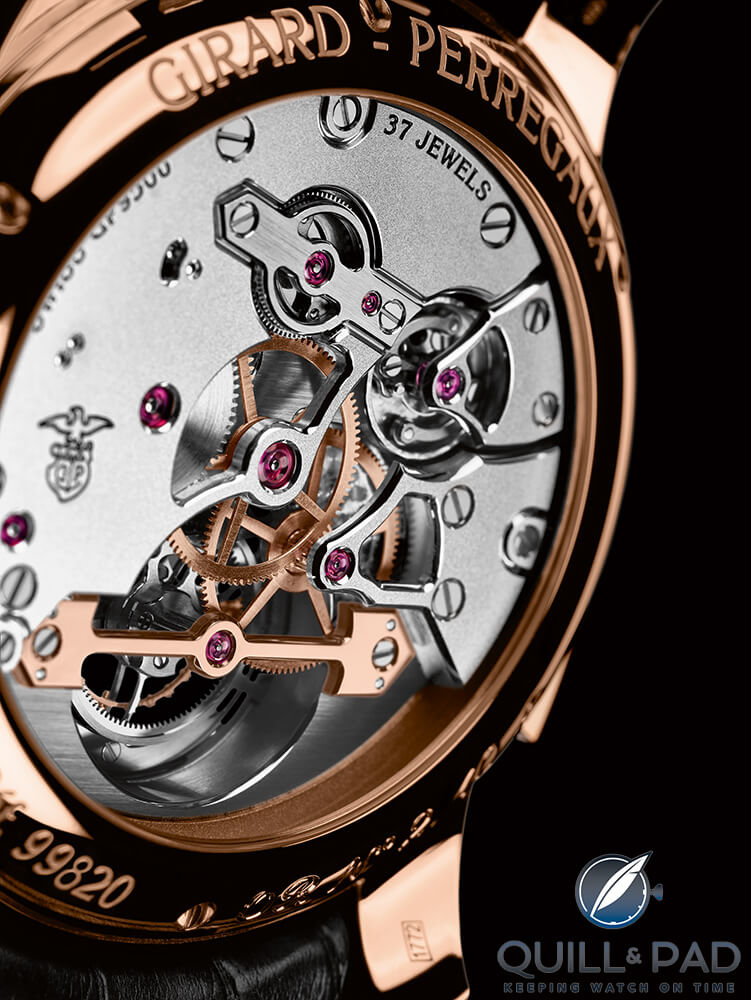
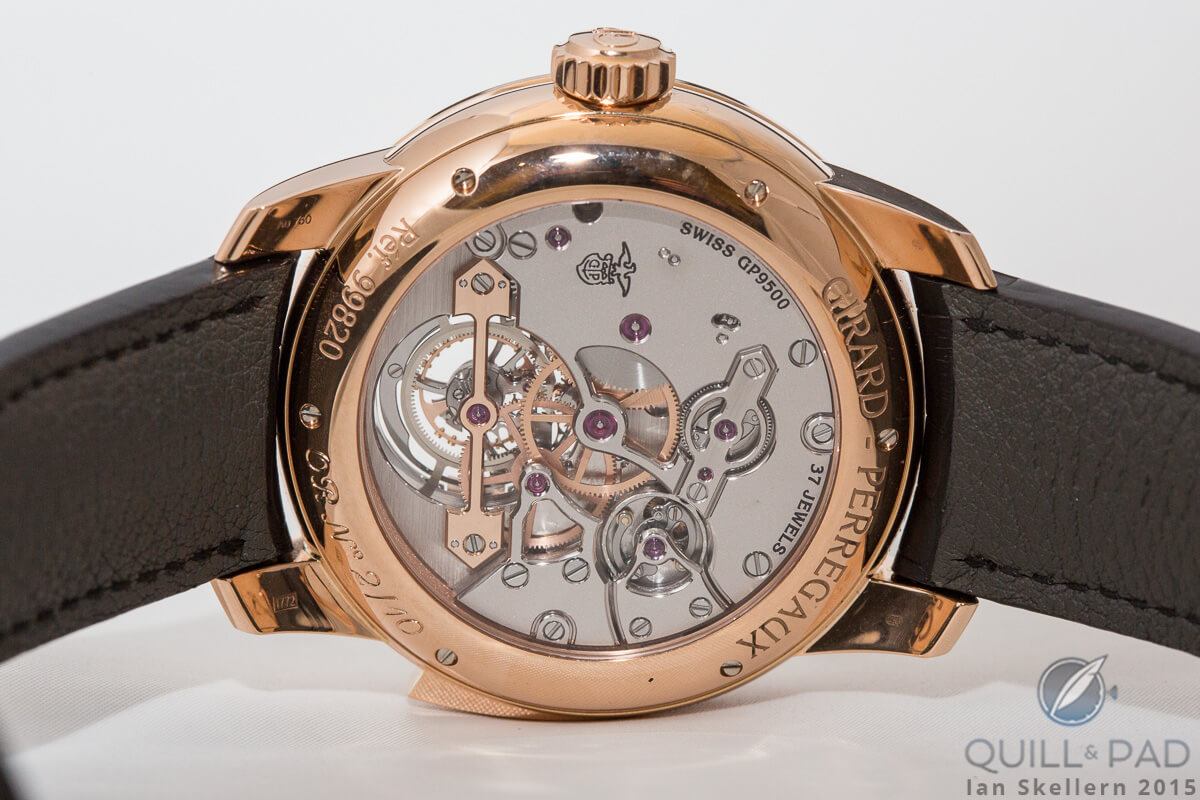
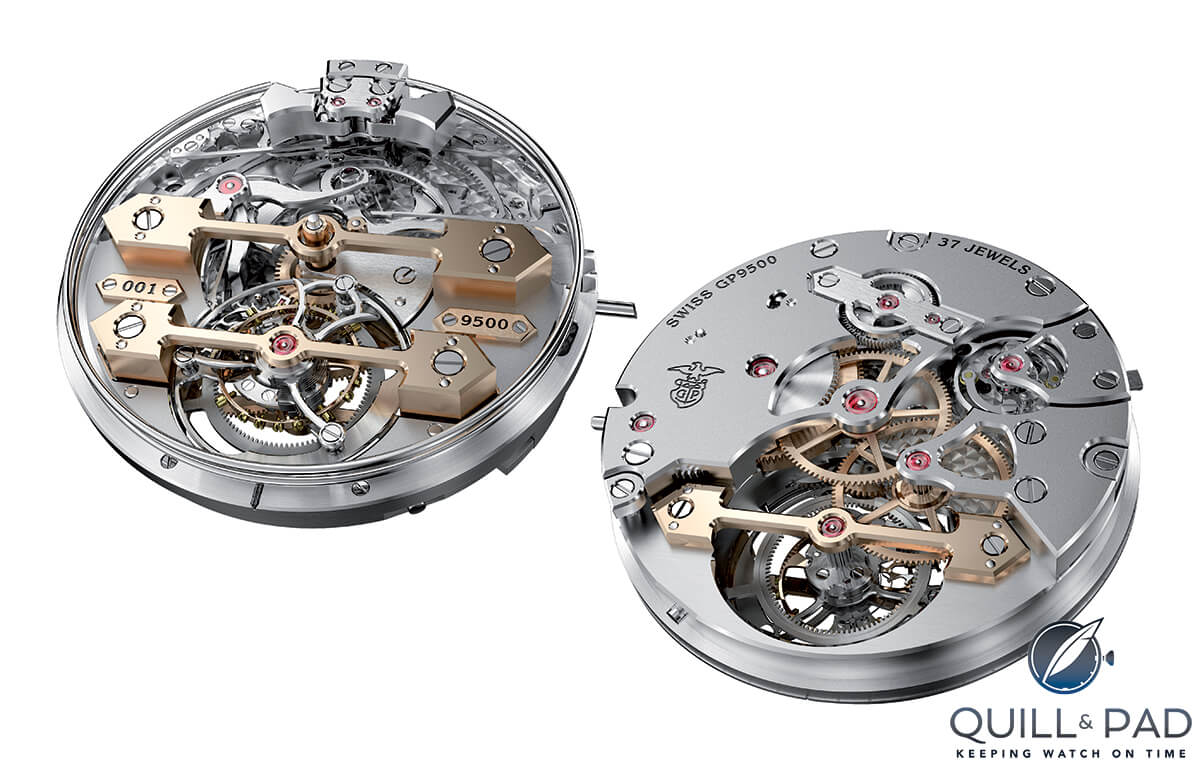

Leave a Reply
Want to join the discussion?Feel free to contribute!